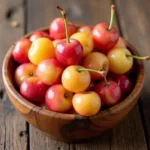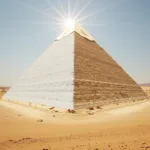Purple, a color often associated with royalty, magic, and creativity, isn’t a primary color like red, yellow, or blue. It’s created by mixing two primary colors: red and blue. But the journey to creating the perfect purple isn’t as simple as just swirling these two together. There’s a whole world of purples waiting to be discovered, each with its unique character and charm.
Decoding the Purple Palette: Red + Blue = ?
The exact shade of purple you achieve depends on several factors, primarily the proportions of red and blue you use. More red results in a warmer, reddish-purple like magenta or crimson. A higher proportion of blue creates cooler tones like violet or indigo. The type of red and blue you start with also plays a significant role. A warm red, like scarlet, mixed with a cool blue, like ultramarine, will produce a different purple than a cool red, like crimson, mixed with a warm blue, like cerulean. It’s like a recipe, where different ingredients yield different results.
Beyond the Basics: Exploring Different Purple Hues
The world of purple extends far beyond the simple red and blue mix. By adding other colors, you can create an even wider range of captivating shades. Adding white lightens the purple, creating pastel shades like lavender or lilac. Incorporating black deepens the purple, producing rich, dark hues like plum or eggplant. Mixing in yellow creates a more muted, brownish-purple like mauve or dusky purple.
What Colors Make Purple in Art and Design?
In the digital world, creating purple is straightforward. RGB (Red, Green, Blue) color models allow for precise control over color values, meaning achieving the desired purple is simply a matter of adjusting the red and blue components. However, in traditional painting, mixing physical pigments is a more nuanced process. The specific pigments in your paints will influence the final color. For instance, mixing Alizarin Crimson with Phthalocyanine Blue will give you a different purple than mixing Cadmium Red with Ultramarine Blue.
Frequently Asked Questions About Creating Purple
- What two main colors make purple? Red and blue are the primary colors that create purple.
- How do I make light purple? Add white to your red and blue mixture to create lighter shades of purple like lavender.
- How do I make dark purple? Incorporate black into your red and blue mix to create darker shades of purple like plum.
- What colors make violet? Violet is a cooler shade of purple, achieved by using a higher proportion of blue compared to red.
- Can I make purple with other colors besides red and blue? While red and blue are the foundation, other colors can be added to modify the hue, such as white, black, or yellow.
- Why does mixing red and blue sometimes look muddy? This can be due to using the wrong types of red and blue or not mixing them thoroughly enough.
- What’s the difference between purple and violet? Violet is a spectral color, meaning it appears in the visible light spectrum. Purple is a combination of red and blue and doesn’t appear in the spectrum.
Conclusion: Mastering the Art of Purple
From delicate lavenders to deep aubergines, understanding what colors make purple opens a world of creative possibilities. By experimenting with different ratios of red and blue, and incorporating other colors into the mix, you can achieve an endless spectrum of captivating purple hues. Whether you’re a painter, a designer, or simply someone who appreciates the beauty of color, mastering the art of purple is a rewarding endeavor. So go ahead, grab your reds and blues, and start exploring the captivating world of purple!
Need help with your next painting project? Our expert color consultants at Color Box Hanoi are ready to help you create the perfect purple haven. Contact us at 0373298888, email us at [email protected], or visit us at 86 Cau Giay, Hanoi. We have a 24/7 customer service team ready to assist you.
“Choosing the right purple can transform a space. It’s all about understanding the nuances of color,” says renowned color expert, Anya Sharma.
“Don’t be afraid to experiment with different shades of red and blue. You might surprise yourself with the results!” adds leading interior designer, Viet Nguyen.
“Purple is a powerful color. Used correctly, it can add depth, drama, and a touch of magic to any environment,” contributes color psychologist, Dr. Linh Tran.

